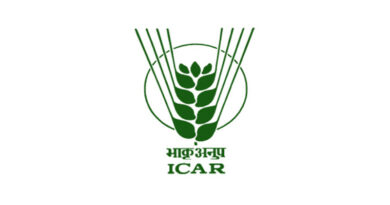Climate Change Sparks Changes in India’s Pearl Millet Farming Zones: New Study
08 September 2023, India: A new study by the International Crops Research Institute for the Semi-Arid Tropics (ICRISAT) and the Indian Council of Agricultural Research – All India Coordinated Research Project on Pearl Millet (ICAR-AICRP) suggests a re-evaluation of how and where pearl millet is grown in India due to changing climate conditions.
Pearl millet, an essential cornerstone of India’s food security, finds itself at a critical juncture.
Amidst shifting weather patterns and evolving agricultural priorities, this study urges a timely revision of the classification criteria governing pearl millet cultivation zones, originally established back in 1979.
This study, featured in a special issue of the Agronomy Journal, used data from ICRISAT’s District Level Database (DLD) to carefully re-examine the entire system.
Director General of ICRISAT Dr Jacqueline Hughes applauded the study and said that with climate change now a permanent reality, it is imperative to recalibrate the approach towards understanding and nurturing this vital crop for dryland communities.
“This new classification system aims to optimize pearl millet production, to effectively assist policymakers, researchers, and farmers make better evidence-based decisions,” said Dr Hughes.
The study used digital technology and crop models to re-evaluate the zones, creating a “digital twin” of the pearl millet system.
This digital twin helps design crops and strategies tailored to the current and future climate conditions of each region.
“This collaborative effort with ICRISAT has led to innovative tools that can greatly improve pearl millet farming, including the selection of new testing sites,” said Dr Tara Satyavathi, Director of ICAR-Indian Institute of Millets Research and Project Coordinator of ICAR-AICRP on Pearl Millet.
Currently, India’s zones are based on rainfall and soil type: A1 for arid regions in Rajasthan, A for semi-arid regions in North and Central India, and B for semi-arid regions with heavy soils in South India.
The proposed changes suggest re-evaluating the A zone, considering evolving climate conditions.
“The proposed new zones take into account the complexity of the system in response to changing climate conditions. While the existing zoning for the A1 and B zones is generally still applicable, the suggestion is to modify the A zone.
“The existing A zone can be broken down into three distinct subzones: G, AE1, and AE2, covering the states in North and Central India. The G zone encompasses Gujarat, AE1 covers East Rajasthan and Haryana, and AE2 covers Uttar Pradesh,” said Dr Vincent Garin, Post-Doctoral Fellow at ICRISAT.
The new zoning framework identifies ‘AE1’ as the core of India’s pearl millet production, where favorable climate and soil conditions, along with improved pearl millet varieties, have led to significant yield increases.
‘AE2’ shows promising yield progress and better farming practices, offering potential for export-oriented gains.
The G zone is experiencing more rainfall due to climate changes, which may lead farmers to shift towards cash crops and limit pearl millet cultivation to the summer season.
This research was funded through collaborations between ICAR, ICRISAT, the Swiss National Science Foundation, the Czech University of Life Sciences Prague, and the Crops to End Hunger initiative.
Also Read: ADAMA launches 2 new CTPR-based products in India
(For Latest Agriculture News & Updates, follow Krishak Jagat on Google News)















